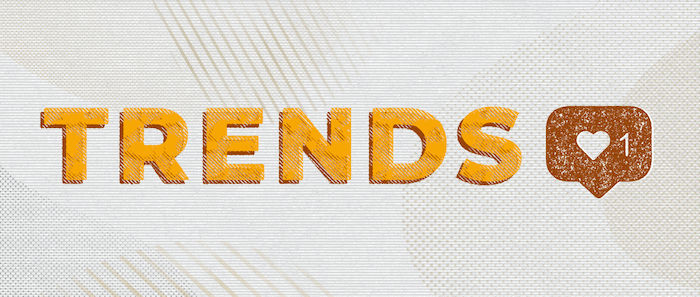Messenger Apps are the Future for Brand Communication
Picture this: You’re standing in a crowded room and everyone is on their phones (I hate this by the way). Nearly half of the faces illuminated by a glowing screen are most likely using a messaging app, or will open one at some point within the next few minutes.
A world where everyone is constantly on their phones? It may feel like a cold look into the future at first glance, however, platforms like Facebook Messenger, WhatsApp and Slack have celebrated this culture shift. The emergence of these companies allows for collaboration and communication in ways we’ve never been able to before.
Earlier this year, our PR department secured a placement with People using WhatsApp while the reporter was in South Korea for the Olympics. And, funny enough, I just heard someone in the office say, “Slack me that report before our 10 a.m. meeting.” Using these messaging apps, people are doing everything from sharing feedback on a mockup from a designer and sharing money via Venmo, to connecting with folks abroad and sharing a funny animated GIF. Sometimes they’re even organizing the occasional poker night with the boys for Friday night. I’m guilty of the last one.
Regardless, the idea of “chat” as a platform is evolving, and more and more technology is being developed to empower its evolution. Facebook is yet again leading the charge, and social media as we know it is about to change. Here are some of our thoughts on the shift:
Messaging is a Boomin'
Messaging apps are dominating mobile phone use. According to recent data, the world’s leading messaging apps have more monthly active users than the top social media apps. Facebook is already way ahead of the game, building up the Messenger platform to 1.2 billion monthly users (reported by Tech Crunch) and by acquiring Whatsapp with 1.5 billion monthly users as of December 2017(Tech Crunch, again). This new space will make for a host of new challenges and opportunities for brands and marketers – and you should stay in front of them.
The "Private" Social Media
Trends are showing that most social activity no longer happens in the public eye. The pressures of worrying about how many likes or comments your posts receive may eventually become a thing of the past. Recent data (reported by RadiumOne) shows that many users prefer to share to private groups and messaging apps. This is the same driving force for popular channels, such as Snapchat or Instagram. These provide a slightly more one-on-one experience in which you can share moments as they happen on a more personal level than traditional news feeds. You can send these posts directly to friends or add it to your story for everyone to see.
Humans Don't Pay Attention
There is a lot of potential for a platform that allows you to effectively communicate in mere seconds. This is particularly true when you live in a time where people have a shorter attention span than a goldfish (eight seconds vs. nine, seriously).
Honestly, the possibilities for the messaging platform are endless. In fact, with AI (Artificial Intelligence) and AR (Augmented Reality) technologies getting in the mix as well, you can probably expect to see big things happening before the year is out.
At the very least, my poker buddies might get distracted by their phones long enough to let me win a few hands.






